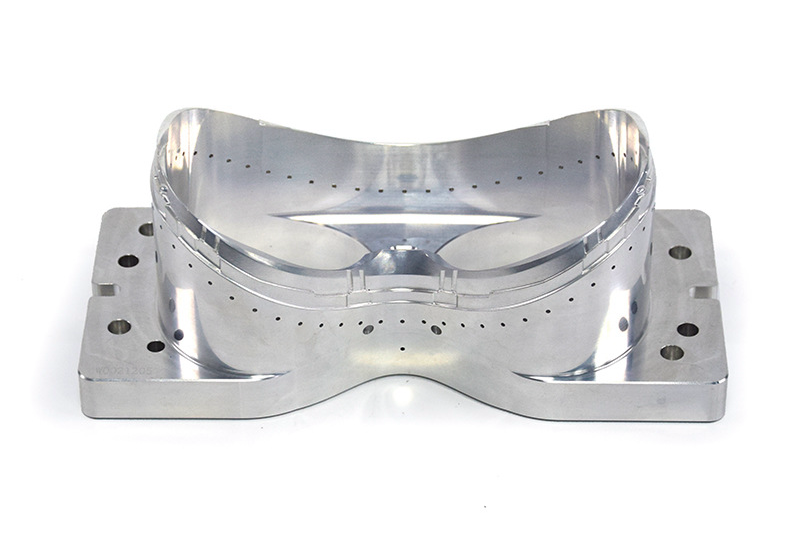Medical Precision: How CNC Machining Transforms Medical Device Manufacturing
Introduction
CNC machining has become indispensable in the medical device industry, providing unprecedented precision and quality in manufacturing. As medical technologies continue to advance rapidly, CNC machining enables the creation of highly intricate and reliable components crucial for patient safety and treatment effectiveness.
Employing state-of-the-art CNC machining manufacturing methods, medical device producers consistently meet strict regulatory and performance standards. CNC machining enhances design flexibility, precision accuracy, and rapid production—transforming how healthcare devices are developed and manufactured.
CNC Machining Steps
Design & Development: Precise CAD/CAM modeling to create highly accurate medical components.
Material Selection: Rigorous selection of biocompatible, sterilizable, and durable materials.
Precision Machining: CNC technology is used to fabricate exact medical device components.
Quality Control: Strict testing protocols ensure medical devices meet stringent standards.
Materials: Material Solutions for Medical Devices
Selecting appropriate materials is critical for ensuring medical device safety, biocompatibility, and durability. Common CNC machined medical materials include:
Material | Properties | Advantages | Applications |
|---|---|---|---|
Tensile Strength: 500-1,500 MPa Yield Strength: 250-1,200 MPa Corrosion resistance: Excellent biocompatibility | Strong, sterilizable, highly corrosion-resistant, durable | Surgical instruments, orthopedic implants, medical device housings | |
Tensile Strength: 900-1,200 MPa Yield Strength: 800-1,000 MPa Excellent biocompatibility and corrosion resistance | Exceptional strength-to-weight ratio, highly biocompatible, resistant to bodily fluids | Dental implants, bone screws, orthopedic prosthetics | |
Tensile Strength: 90-110 MPa Density: 1.32 g/cm³ Excellent chemical resistance and biocompatibility | Lightweight, radiolucent, biocompatible, sterilizable | Spinal implants, surgical instruments, medical imaging components | |
Tensile Strength: 310 MPa Yield Strength: 276 MPa Lightweight, easy sterilization capability | Lightweight, easy to machine, excellent thermal conductivity | Medical device casings, diagnostic equipment components |
Surface Treatment: Enhancing Medical Device Durability
Passivation
Functions: Passivation chemically enhances the corrosion resistance of stainless steel by removing surface contaminants.
Key Features: Provides stable, protective oxide layer, and excellent biocompatibility.
Applications and Scenarios: Surgical instruments, implantable devices, medical needles.
Anodizing
Functions: Anodizing increases corrosion resistance and wear durability of aluminum parts, creating a robust oxide layer.
Key Features: Surface hardness up to 400 HV, customizable colors for identification.
Applications and Scenarios: Medical equipment housings, diagnostic device components, durable instrument cases.
Electropolishing
Functions: Electropolishing creates ultra-smooth, contamination-free surfaces, significantly reducing bacterial adhesion.
Key Features: Surface roughness down to 0.1 µm, superior biocompatibility, easy sterilization.
Applications and Scenarios: Surgical implants, stents, critical surgical tools.
Physical Vapor Deposition (PVD)
Functions: PVD offers durable, bio-compatible coating, enhancing wear resistance and component longevity.
Key Features: Hardness up to 2,000 HV, highly resistant to abrasion and corrosion.
Applications and Scenarios: Orthopedic implants, surgical instruments, dental components.
CNC Machining Process Comparison
Specific CNC machining processes deliver distinct benefits tailored for medical device manufacturing:
Process | Key Features | Application Scenarios |
|---|---|---|
Precision: ±0.0025 mm Complex multi-axis capabilities | Orthopedic implants, complex surgical instruments, diagnostic components | |
Precision: ±0.0025 mm Ideal for precision cylindrical components | Bone screws, surgical tubing connectors, precision medical needles | |
Precision: ±0.0025 mm hole accuracy Efficient hole creation | Surgical device assemblies, orthopedic plates, implantable device housings | |
Surface finish: up to 0.1 µm High dimensional accuracy | Surgical blade edges, precision implant surfaces, precision valves | |
Precision: ±0.0025 mm for intricate parts Flexible, complex component machining | Complex implants, minimally invasive surgical instruments, precise prosthetics |
Considerations in Production
Biocompatibility: Material choices must be safe, non-reactive, and meet stringent medical standards.
Precision and Quality Control: Rigorous inspection protocols and validation methods to meet medical standards and tolerances.
Sterilization Compatibility: Material and design choices allow consistent and reliable sterilization.
Surface Integrity: Ensuring surfaces reduce contamination risk and enhance biocompatibility through specialized treatments.
Industry and Applications
CNC machining significantly impacts multiple areas within the medical sector:
Medical Devices: Surgical instruments, diagnostic tools, minimally invasive components.
Orthopedics: Joint implants, bone screws, precision orthopedic devices.
Dental: Dental implants, precision orthodontic devices, prosthetic parts.
Medical Robotics: Precision components for surgical robots and robotic assistance devices.
Diagnostic Equipment: Imaging equipment housings, precision measurement devices, and laboratory instruments.
FAQs
Why is CNC machining essential in medical device manufacturing?
What materials are commonly CNC machined for medical devices?
How does CNC machining improve precision in medical implants?
Which surface treatments enhance medical device biocompatibility?
How do machining processes differ across medical device categories?

